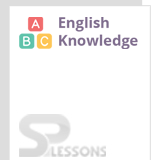 Introduction
Introduction
English Knowledge is an important section in the employment-related competitive exams in India. In particular, exams like SBI, IBPS and other bank-related employment exams have English Language questions along with Reasoning and Quantitative Aptitude. The English Language section primarily has questions related to Reading Comprehension, Cloze Test, Fill in the Blanks, Error Spotting, Grammar, Sentence Improvement, etc. This article presents the SIB PO English Language Quiz 2 sample questions and answers. The Online examination is scheduled to be conducted on 25[latex]^{th}[/latex] July, 2019.
 Quiz
Quiz
Directions (1Q - 3Q): Read the following passage carefully and answer the questions given below it. Certain parts are given in bold to answer some of the questions based on the passage.
People have long circulated news via word-of-mouth, and as language evolved into writing and literacy – and governments played larger roles in people’s lives – sharing information became a necessity. However, disseminating news and information on paper presented significant challenges. When each copy had to be handwritten, mass distribution was impossible. The invention of the printing press paved the way for “true” newspapers The first true newspapers arrived after Johannes Gutenberg introduced his movable type printing press to the European world around 1440. Though printing presses with movable type had existed in eastern Asia for around two centuries, they never made it to Europe; furthermore, Gutenberg’s version made it significantly faster to mass produce documents.
By 1500, the printing press had made its way throughout Europe, and news sheets (or news books) were mass-distributed. The first weekly newspaper was published in Germany by Johann Carolus in 1604. Called Relation aller Furnemmen und gedenckwurdigen Historien, the publication satisfied the four tenets of a “true” newspaper: • Accessibility by the public • Published at a regular interval (daily, weekly, monthly, etc.) • Information is current • Covers a variety of topics (politics, events, entertainment, sports, etc.) Despite meeting the requirements for a newspaper, there is some debate as to whether the Relation qualifies as the world’s first newspaper since it was printed in quarto, not folio, size. It’s worth noting the World Association of Newspapers considers The Relation the first true newspaper.
Other German newspapers followed, and in 1618 the world’s first broadsheet newspaper printed in folio size was published in Amsterdam, called Courante uyt Italien, Duytslandt, &c. The newspaper format soon spread throughout Europe, with newspapers published in Spain, France, and Sweden. The first English newspaper was published in 1665 in Oxford, England. Known as the Oxford Gazette, the newspaper moved to London in 1666 and was renamed the London Gazette. It’s still being published today.
Q1. Where was the first weekly newspaper published in 1604 ?
- A. London
B. France
C. England
D. Germany
E. Sweden
- A. current information
B. covering vast topics
C. Accessibility by the public
D. published at regular interval
E. all of the above
- A. reign
B. circulation
C. abound
D. transform
E. perturb
- A. Excited
B. Delicious
C. Pleasing
D. Desperate
E. All the above
- A. covet
B. condemn
C. blame
D. deplore
E. All the above
Directions (Q1 - Q3): Read the following questions which are SPOTTING ERRORS and answer them below.
Q1. A)/ The perception that the Modi government B)/ has moved Westwards, especially C)/ towards the US, and had D)/ neglected Russia, is misplaced. E)/ No error
- A. A
B. B
C. C
D. D
E. E
- A. A
B. B
C. C
D. D
E. E
- A. A
B. B
C. C
D. D
E. E
- A. paint nicely
B. refuse to submit
C. opposite in views
D. admit defeat
E. None of these
- A. to stay in jail
B. give trouble
C. Accuse the wrong person
D. beat up completely
E. None of these
Directions (Q1 - Q3): Read the following questions which are FILL IN THE BLANKS and Choose TWO words to be fitted in to the sentence.
Q1. The episode in UP________the vital principle that while projects for sweeping change are indeed the way out of problems that bedevil Indian________, the devil is always in the details.
- A. free, rules
B. illustrates , democracy
C. hide, communism
D. obscure, system
E. None of these
- A. recollect, nice
B. recall, good
C. dismissed , repugnant
D. learn, friendly
E. None of these
- A. remind, critical
B. remember, democratic
C. recalls , autocratic
D. forgetfulness, authority
E. None of these
- A. A women who is strong and energetic
B. A beautiful women
C. A women who is dainty
D. A greedy women
E. None of these
- A. oblivious
B. scoundrel
C. hilarious
D. zippy
E. None of these
Other Articles
 Study Guide
Study Guide
 Exams
Exams
| Competitive Exams - College Entrance Exams | |||
|---|---|---|---|
| Category | Notification | ||
| Diploma | NITC New Delhi | Goa Diploma Admissions 2019 | |
| Click Here For – All India Entrance Exam Notifications | |||
 Daily CA
Daily CA
 Job-Alerts
Job-Alerts
 SP Quiz
SP Quiz
| Competitive Exams - Practice Sets | |
|---|---|
| Category | Quiz |
| Reasoning | Puzzles |
| English Language | Spotting Errors |
| Insurance Awareness | Insurance Awareness |
 GK
GK
| General Knowledge for Competitive Examinations | |
|---|---|
| Topic | Name of the Article |
| GK - World | Cricket |
| Sports Venues | |
| Presidential Residence | |
| GK - India | Indian Cities Nicknames |
| First Time In India | |
| Indian Soil and Agriculture | |
| GK - Abbreviations | Insurance Domain Abbreviations |
| Education Abbreviations | |
| GK - Banking & Insurance | Stock Broking – SEBI Entities |
| Monetary Policy Committee | |
| GK - Science & Technology | Chemical Elements |
| Botany Important Terms | |
| Indian Satellites | |





